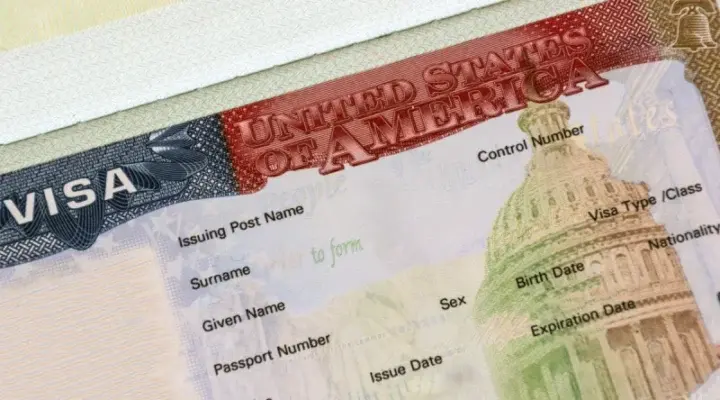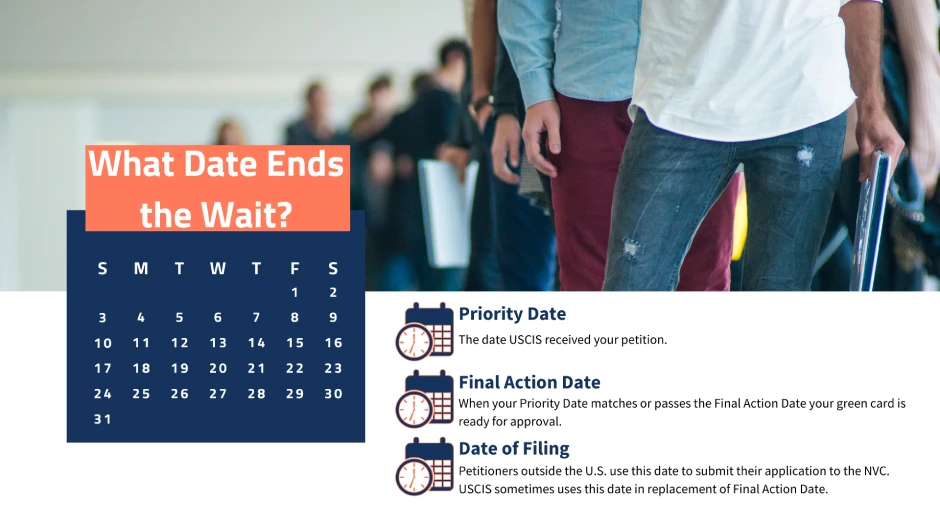VisaNation legal team provides regular monthly updates on the most recent visa bulletin, analyzes the date movements, and predicts upcoming months to help answer these questions. This month, we’ll go over the December 2025 visa bulletin.
For more information on how to read the bulletin, scroll to the bottom of the post or view the Table of Contents.
December 2025 Visa Bulletin: Overview and Predictions
The December 2025 Visa Bulletin brings the first signs of movement after last month’s stagnant November bulletin. VisaNation attorneys remark that the lack of progress last month affected not only India and China but also worldwide EB2 and EB3 applicants, who have historically relied on these categories for steady advancement. The December improvements, while modest, are therefore meaningful for all employment-based applicants and signal that the Department of State is cautiously releasing visa numbers as FY 2026 demand settles.
USCIS has also confirmed that it will accept Adjustment of Status filings under the Dates for Filing chart in December, creating an important window for thousands of applicants who could not move forward in November.
Key December Movement
China
- EB 1: advances 1 month to January 22, 2022
- EB 2: advances 2 months to June 1, 2021
- EB 3: advances 1 month to April 1, 2021
India
- EB 1: advances 1 month to March 15, 2022
- EB 2: advances 1 month and 14 days to May 15, 2013
- EB 3: advances 1 month to September 22, 2013
Worldwide (All Other Countries)
- EB 1: remains current
- EB 2: advances 2 months to February 1, 2024
- EB 3: advances 14 days to April 15, 2023
Other Key Updates:
- In the Family Filing chart, the F-2A category shows the most significant movement, with a 30-day advancement across all regions.
- In the Family Filing chart, Mexico had the largest leaps across the F-2B and F-1, each with over 100 days of advancement, and the Philippines saw the F-3 category advance 92 days.
Our firm posits that the lack of progress in November suggested that DOS was pausing to assess early fiscal year demand and USCIS inventory. When that happens, it often raises fears of slow movement for the remainder of the year. December’s advancement indicates that:
- The DOS is now confident enough in demand projections to restart forward movement.
- Since there wasn’t a major spike in demand for EB2 and EB3, there was no need to keep the dates frozen.
- USCIS now has a more accurate count of its pending I-485 applications, so the Department of State was confident in advancing the dates for oversubscribed categories.
This is a reassuring sign for applicants across the board.
VisaNation Strategy Guidance For All Categories
- File an Adjustment of Status in December if eligible under Chart B. This applies equally to worldwide applicants and those from India and China. Our attorneys state that filing in December allows:
- EAD and Advance Parole issuance
- Dependents to secure status stability
- CSPA age protection for children
- Protection from future retrogression
- Many worldwide EB2 and EB3 applicants who were blocked in November can now move forward.
- Worldwide EB2 applicants should act quickly – The two-month advance is a meaningful correction after a stalled November. With PERM processing times unpredictable, those close to current should ensure there are no avoidable delays at the employer level.
- Worldwide EB-3 applicants should not assume consistent movement. Our attorneys highlight that historically, the EB-3 category sees faster surges and sharper retrogressions. December’s fourteen-day movement suggests the DOS is being conservative. Anyone eligible to file AOS should act during this window.
- India and China applicants should leverage the Chart B filing even though Final Action Dates remain slow. Chart B provides an opportunity to lock in benefits despite long backlogs. December is an important month for these applicants.
- EB1 remains the safest and most stable route – Worldwide remains current, and India and China continue their incremental advances. Anyone eligible for EB-1 reclassification or interfiling should closely evaluate the option with counsel.
Visa Bulletin Predictions for Early 2026
- Our firm predicts that Chart B Dates for Filing are likely to remain in use for January and possibly February. This pattern is common early in the fiscal year, and December’s choice supports the likelihood of continued acceptance.
- EB-2 Worldwide may continue modest forward movement. No indicators suggest oversubscription. A one to two-month advance in January is plausible.
- EB-3 Worldwide could move slowly or pause. The DOS remains cautious here. A small advance is possible, but a temporary freeze would not be surprising.
- For India and China, expect continued incremental month-over-month advances. The backlog depth prevents major jumps, but DOS appears committed to avoiding another freeze.
- EB-1 should remain stable through at least Q2. Demand is balanced and predictable at the moment.
Adjustment of Status (AOS) Filing Guidance
For Adjustment of Status (AOS) filings, USCIS has confirmed:
- Employment-based categories: applicants can continue to use the “Filing Dates” chart. This opens filing to a larger group of applicants earlier, though they’ll still need to wait until their Final Action Date is current before USCIS can approve the green card.
- Family-sponsored categories: applicants must use the Dates for Filing chart.
Final Action vs. Filing Dates:
It’s important to differentiate between the final action dates (when a visa can be issued) and the filing dates (when an application can be submitted). This will help applicants understand their current status and next steps.
The Final Action Dates chart determines when an I-485 adjustment of status application can be approved (adjudicated) and your green card issued, while the Dates for Filing Chart determines when an applicant can submit their I-485 Adjustment of Status application.
Here is why this distinction is critical for our clients:
For individuals with a pending Adjustment of Status (AOS) application, we stress that their priority date must be current under the Final Action Chart for their green card to be approved.
This is also where advanced strategies like interfiling, a process that allows AOS applicants to change their preference category, become a key topic. Interfiling is a process our attorneys use to move a client’s pending AOS application from one preference category to a more favorable one (e.g., from EB-3 to EB-2) to take advantage of a more current Final Action Date. This is a complex legal decision, and we recommend contacting VisaNation Law Group to determine if it is the right strategy for your specific case.
As the fiscal year progresses, demand fluctuations and potential “retrogressions” remain possible. Our firm doesn’t just monitor these trends; we actively analyze them to provide projections as new information becomes available. We encourage all applicants to stay informed and prepared for potential adjustments in the coming months.
Family-Based Green Cards
The category for family-based immigration comprises four preference levels based on who your sponsoring family member is in relation to you. They include:
- F1 Unmarried Sons and Daughters of U.S. Citizens: 23,400 plus any numbers not required for fourth preference.
- F2A: Spouses and Children of Permanent Residents
- F2B Unmarried Sons and Daughters (21 years of age or older) of Permanent Residents: 23% of the overall second preference limitation.
- F3 Married Sons and Daughters of U.S. Citizens
- (F4) Brothers and Sisters of Adult U.S. Citizens
There are five chargeability areas for this category: China, India, Mexico, the Philippines, and all other countries. Your country of chargeability is where you were born.
Family-Based Dates for Filing Charts
|
Category |
Rest of the World |
Mainland China |
India |
Mexico |
Philippines |
|
01SEP17 no change |
01SEP17 no change |
01SEP17 no change |
01MAR07 +144 days |
22APR15 no change |
|
|
22NOV25 +1 month |
22NOV25 +1 month |
22NOV25 +1 month |
22NOV25 +1 month |
22NOV25 +1 month |
|
|
08MAR17 +66 days |
08MAR17 no change |
08MAR17 no change |
15MAY09 no change |
01OCT13 no change |
|
|
22JUL12 no change |
22JUL12 no change |
22JUL12 no change |
01JUL01 no change |
01NOV05 no change |
|
|
01MAR09 no change |
01MAR09 no change |
15DEC06 no change |
30APR01 no change |
01JAN08 no change |
*The numbers in the brackets designate the amount of movement in the filing date for that particular category compared to the previous month. If there’s no bracket below certain dates, there is no movement for those dates/categories in the latest visa bulletin.
-
All Chargeability Areas
-
F2A: Progressed 31 days to 22NOV25
-
-
China
-
F2A: Progressed 31 days to 22NOV25
-
-
India
-
F2A: Progressed 31 days to 22NOV25
-
-
Mexico
-
F2A: Progressed 31 days to 22NOV25
-
-
Philippines
-
F2A: Progressed 31 days to 22NOV25
-
Family-Based Final Action Dates Chart
|
Category |
Rest of the World |
Mainland China |
India |
Mexico |
Philippines |
|
08NOV16 no change |
08NOV16 no change |
08NOV16 no change |
01MAR06 +4 months |
22JAN13 no change |
|
|
01FEB24 no change |
01FEB24 no change |
01FEB24 no change |
01FEB23 no change |
01FEB24 no change |
|
|
01DEC16 no change |
01DEC16 no change |
01DEC16 no change |
01MAY01 +5 months |
08OCT12 +7 days |
|
|
08SEP11 no change |
08SEP11 no change |
08SEP11 no change |
01MAY01 no change |
01NOV04 +2 months |
|
|
08JAN08 no change |
08JAN08 no change |
01NOV06 no change |
08APR01 no change |
15JUL06 +4 months |
*The numbers in the brackets designate the amount of movement in the final action date for that particular category compared to the previous month. If there’s no bracket below certain dates, there is no movement for those dates/categories in the latest visa bulletin.
Mexico
- F1: Progressed 99 days to 01MAR06
- F2B: Progressed 152 days (5 months) to 15MAY08
Philippines
- F2B: Progressed 7 days to 08OCT12
- F3: Progressed 40 days to 01NOV04
- F4: Progressed 115 days to 15JUL06
Employment-Based Green Cards
With five different preference levels and seven chargeability areas, USCIS issues employment-based category visas through your job or occupation. The chargeability areas are China, India, Mexico, the Philippines, Central America (Guatemala, Honduras, El Salvador), Vietnam, and the general category.
Employment-Based Dates: Final Action Dates
|
Category |
Rest of the World |
Mainland China |
India |
Mexico |
Philippines |
|
Current no change |
22JAN23 no change |
15MAR22 no change |
Current no change |
Current no change |
|
|
01FEB24 no change |
01JUN21 no change |
15MAY13 no change |
01FEB24 no change |
01FEB24 no change |
|
|
15APR23 no change |
01APR21 no change |
22SEP13 no change |
15APR23 no change |
15APR23 no change |
|
|
EB-3 Other |
01AUG21 no change |
08DEC17 no change |
22SEP13 no change |
01AUG21 no change |
15JUL21 no change |
|
01SEP20 no change |
01SEP20 no change |
01SEP20 no change |
01SEP20 no change |
01SEP20 no change |
|
|
Current |
15JUL16 no change |
01JUL21 no change |
Current |
Current |
Worldwide (All Other Countries)
- EB-2: Advanced 2 months to February 1, 2024.
- EB-3: Advanced 14 days to April 15, 2023.
China
- EB-1: Advanced 1 month to January 22, 2022.
- EB-2: Advanced 2 months to June 1, 2021.
- EB-3: Advanced 1 month to April 1, 2021.
India
-
EB-1: Advanced 1 month to March 15, 2022.
-
EB-2: Advanced 1 month and 14 days to May 15, 2013.
-
EB-3: Advanced 1 month to September 22, 2013.
Mexico
-
EB-2: Progressed 62 days to 01FEB24
-
EB-3: Progressed 14 days to 15APR23
Philippines:
-
EB-2: Progressed 62 days to 01FEB24
-
EB-3: Progressed 14 days to 15APR23
Certain Religious Workers (SR)
- Changed from Unavailable to 01SEP20
Employment-Based Dates for Filing Chart
Importantly, for employment-based categories, adjustment of status applicants can use the Filing Dates chart.
|
Category |
Rest of the World |
Mainland China |
India |
Mexico |
Philippines |
|
Current no change |
15MAY23 +5 months |
15APR23 +14 months |
Current no change |
Current no change |
|
|
15JUL24 +7 months |
01DEC21 +8 months |
01DEC13 +8 months |
15JUL24 +7 months |
15JUL24 +7 months |
|
|
01JUL23 +3 months |
01JAN22 +12 months |
15AUG14 +12 months |
01JUL23 +3 months |
01JUL23 no change |
|
|
EB-3 Other |
01DEC21 no change |
01OCT18 +12 months |
15AUG14 +7 days |
01DEC21 +5 months |
01DEC21 +5 months |
|
15FEB21 +7 months |
15FEB21 +7 months |
15FEB21 +7 months |
15FEB21 +7 months |
15FEB21 +7 months |
|
|
Current no change |
01JUL16 +7 months |
01APR22 +2 months |
Current no change |
Current no change |
*The numbers in the brackets designate the amount of movement in the final action date for that particular category compared to the previous month. If there’s no bracket below certain dates, there is no movement for those dates/categories in the latest visa bulletin.
Certain Religious Workers (SR)
- Changed from Unavailable to Changed to 15FEB21
Important December 2025 Visa Bulletin Dates
For those new to the green card process, our law firm recommends learning a few terms and dates to understand the rest of this visa bulletin report. If you have further questions about the process or anything else about your green card, you should consult with your immigration attorney.
Priority Dates
Each person who files a petition with the USCIS receives a priority date when the government obtains their petition. A priority date establishes a person’s place in line to get an immigrant visa. Keep this date handy, since you will need it to compare to the dates in this bulletin. Remember that your priority date does not move, and you cannot change it except under certain circumstances.
Note: Priority dates are not relevant for immediate relatives of U.S. Citizens (e.g., spouses or minor children) as that category is always current.
Final Action Dates
Final action dates are based on the green card category and the chargeability area—your country of origin. Therefore, the final action dates constantly change based on how many people from each chargeability area have petitioned for that green card.
If green cards are still available, the final action date will likely move closer to your priority date. If green cards are unavailable, you will not see any movement from that final action date. However, if the limit has passed, you may see the date retrogress or move backward from your priority date.
Once the final action date in your green card preference level and chargeability area reaches your priority date, your priority date will be considered current. Once current, you will adjust your status or go through consular processing.
Date for Filing Charts and I-485
You’ll notice there are two charts for each category.
- The Date for Filing chart determines whether or not one can submit the final immigrant visa application.
- The Final Action Date chart indicates whether an immigrant visa number will be available.
USCIS announces which chart applicants can use within a week of the visa bulletin’s release.
Can You Shorten Your Waiting Time?
The short answer is: probably not. However, there are two prominent cases in which you may be able to shorten your green card processing time, which we will explain here.
- The first way is to file an I-140 for a green card category that has a current priority date. In this case, your green card can begin processing immediately, and you can even pay an additional fee for premium processing, which will shorten the processing time to 15 business days. However, this is only available for certain green cards that use the I-140.
- The second situation involves green card “porting,” or transferring your application from a lower preference level (EB-3) to a higher one (EB-2) to take advantage of the shorter waiting times. This is misleading because you don’t port your green card. In reality, you need to start with a new petition (and a new PERM if necessary). The “porting” aspect only comes in when you indicate that you want to retain your original priority date.
As attractive as “porting” might seem, it is a delicate process with particular requirements. Therefore, we recommend running complex decisions like this through your immigration attorney.
Staying Up-to-Date
In the world of immigration law, it always pays to be informed. The more you know about your green card, the easier it will be to make informed decisions about your case. To stay in the know about things like the newest visa bulletin, follow the Department of State’s Visa Bulletin.
Final Thoughts
After a completely stagnant November across Worldwide EB2, Worldwide EB3 and all India and China categories, December’s advancement is a positive sign. It reflects that the DOS is distributing visa numbers more confidently as the FY 2026 inventory becomes clearer. The decision by USCIS to accept Chart B filings for December compounds the opportunity. Applicants across all countries, not only India and China, should treat December as an important month to file, strategize, and secure long-term stability in the green card process.









